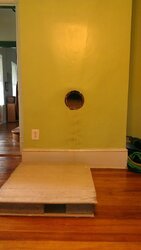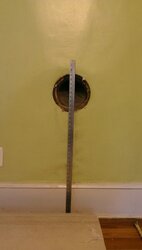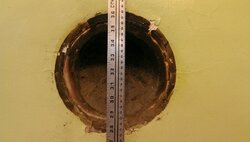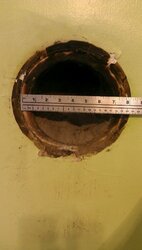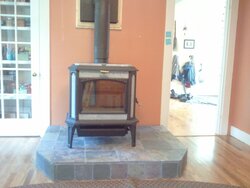Ok guys, help me out. Last year, I installed my Breckwell Big E and it ran all winter. I decided to swap it for a wood stove after much deliberation. Here's what the crock looked like after the uninstall.
Mind you, it had a clean out T right out of the back of the stove which never had a significant amount of ash. So my first question is: Why the hell did all the ash sit in the crock and not the T? Second, is the coloring indicative of an installation issue or is that pretty normal? I peeled away a bit of the flaking paint and there was bright white plaster underneath. I did not use a masonry crock adapter.
I'm purchasing a Woodstock Progress Hybrid as a replacement for the Big E. That sucker is 700 lbs and I'm hoping to prevent the need to move the stove to clean the crock. I'd like to hear your thoughts on the most efficient way to vent this stove. My plan is to use a clean out T and a masonry/pipe adapter. A couple of numbers to work with:
Your thoughts are much appreciated!
Mind you, it had a clean out T right out of the back of the stove which never had a significant amount of ash. So my first question is: Why the hell did all the ash sit in the crock and not the T? Second, is the coloring indicative of an installation issue or is that pretty normal? I peeled away a bit of the flaking paint and there was bright white plaster underneath. I did not use a masonry crock adapter.
I'm purchasing a Woodstock Progress Hybrid as a replacement for the Big E. That sucker is 700 lbs and I'm hoping to prevent the need to move the stove to clean the crock. I'd like to hear your thoughts on the most efficient way to vent this stove. My plan is to use a clean out T and a masonry/pipe adapter. A couple of numbers to work with:
- The stove's rear flue height center with standard legs is 27.75".
- The stove's rear flue height with short legs is 22.75".
- My masonry flue center is 33".
- I can build a custom hearth pad if needed.
Your thoughts are much appreciated!


